Results
-
 £57.50
£57.50Carrying You from "Laputa: Castle in the Sky" - Joe Hisaishi
New Sounds in Concert Band Series(NSB) for small band with 2-part choir Duration: approx.4'10" Arranged by Eiji Suzuki"Carrying You" was composed as a theme song to Castle in the Sky, an animated film produced by Studio Ghibli and directed by Hayao Miyazaki, released in 1986. The composer for Castle in the Sky was originally not Joe Hisaishi, but the director Miyazaki strongly requested him. The director told Hisaishi his vision for the film, and based on the world he imagined, Hisaishi made a collection of music called the Image Album. The melody that later becomes the basis for "Carrying You" was born from this album. However, the director Miyazaki was not planning on including a theme song in this film. Isao Takahata, the producer, proposed including a song, for the audience to think over the film at the end. He wanted the audience to think, "While the protagonists sought for the treasure, they didn't obtain any treasure. What did they obtain instead?" They thought, if they are going to create a theme song, it should be something organically connected with the entire film. Takahata requested the director Miyazaki to write the lyrics for the theme song. And to Hisaishi, he gave instructions to create a melody for the theme song using an instrumental piece called "Pazu and Sheeta" from the image album mentioned above. Director Miyazaki handed a piece of memo with lyrics to Takahata. "Carrying You" we hear now is this lyrics with some changes, set to Hisaishi's music. The melody is used at the opening of the film as well as the scene where Laputa is destroyed, and the song is used for the ending. Performance Advice from Arranger Suzuki: This is an extremely simple arrangement that can be performed by lower grade bands and singers. Of course, it can be played without singers and chorus, but the contents of the lyrics are very tasty so if possible, we recommend that you perform using the voices. Depending on your resources, the voice parts can be done as all solo, all female chorus, and so on.
Estimated dispatch 7-14 working days
-
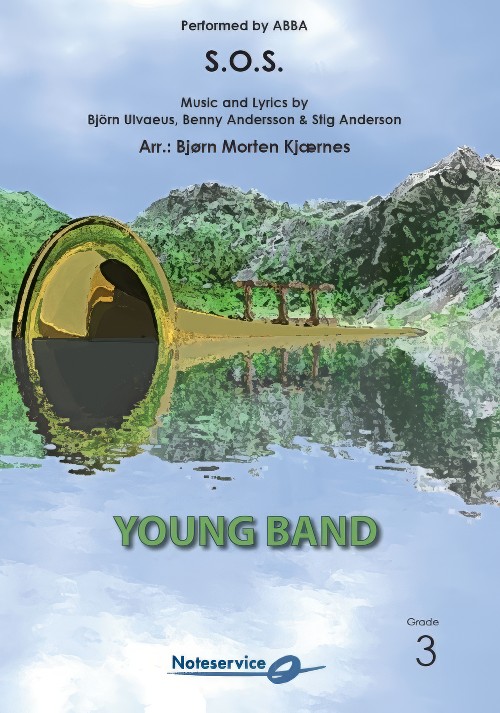 £73.00
£73.00S.O.S. (Concert Band - Score and Parts) - Kjaernes, Bjorn Morten
When the publisher asked me to make an arrangement of an ABBA tune, S.O.S. was the first song I thought of. Its introduction and melody are well suited to play for Wind Band. Admittedly, the key had to be shifted to make it sound good for this instrumentation. To me, this is nostalgia, while for others, the Mamma Mia movie/show will be what they associate with this wonderful song. Apart from a few medleys, few of ABBA's songs are available to Wind Band. So, it was very fun to work on this classic.The arrangement is made quite simply to fit many sizes of bands. Technically, it is also relatively simple both in range and rhythm. As you can see, there are many ways to adjust this arrangement to your own ensemble. Bring out melody lines and the bassline, and a lot is done. If needed, simplify to make it sound nice.Get creative and have fun!- Bjorn Morten KjaernesDuration: 3.30
Estimated dispatch 7-14 working days
-
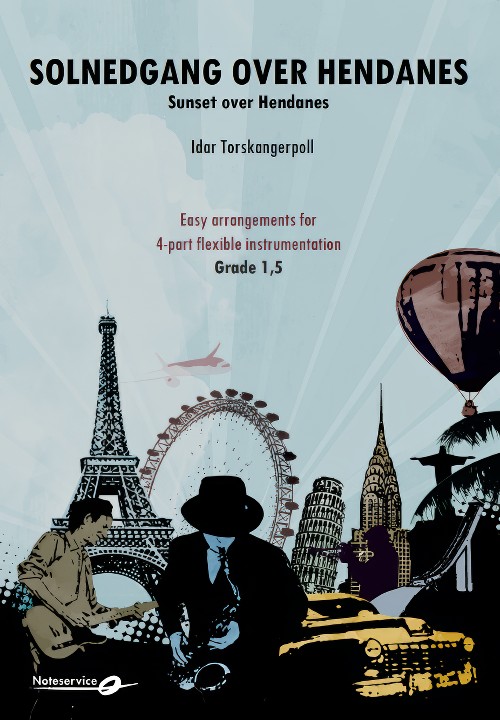 £59.80
£59.80Solnedgang over Hendanes (Sunset over Hendanes) (Flexible Ensemble - Score and Parts) - Torskangerpoll, Idar
This piece describes a sunset over Hendanes, a viewpoint near Torskangerpoll, the composer's home village. From this place one has a 180-degree view over the North sea, and one can see the sun setting into the ocean in the west. On hot summer s nights this is a particular beautiful spectacle. This piece is for bands looking for a calm and expressive item to play. There is melodic material in all parts and this is building a contrasted expression throughout the piece.Duration: 2.30
Estimated dispatch 7-14 working days
-
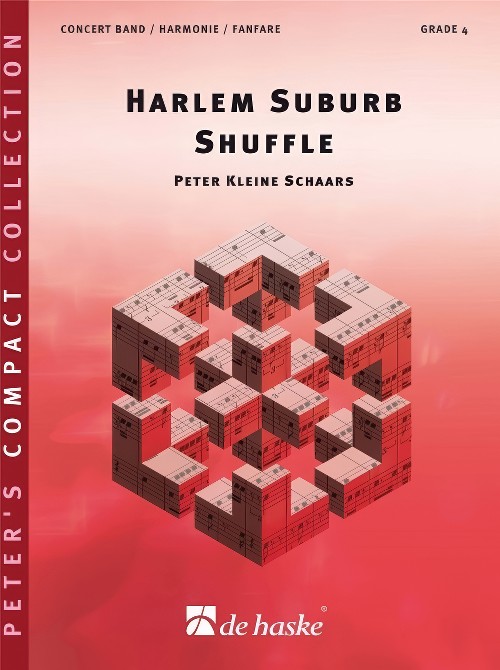 £69.99
£69.99Harlem Suburb Shuffle (Flexible Ensemble - Score and Parts) - Schaars, Peter Kleine
From the beginning of the Middle Ages, we have known performance practices in which the duration of the notes can differ from the actual notation. In some cases, binary written melodies were performed in a ternary way. This is also the case in the present-day shuffle: the written quavers are performed in a long-short system in which the ratio is 2:1. In other words, the performance practice is based on a triplet feel. In this composition, all ingredients of the shuffle are featured: a vigorous swing rhythm, a walking bass, the successions of thirds in the accompaniment and the frequent use of triplets. To make sure that the binary written rhythms in the accompaniments are performed in the correct ternary manner, Peter Kleine Schaars has notated the melody themes in triplets as much as possible. Thus, this composition is a very useful exercise for the swing development of your ensemble. Additionally, the work is a treat to listen to, so your audience will really appreciate this up-tempo big band like composition. All ternary rhythmic cells 17 till 24 pass in revue, further more much attention had been paid to a correct performance of cell 4 in swing feel.Duration: 3.00
Estimated dispatch 7-14 working days
-
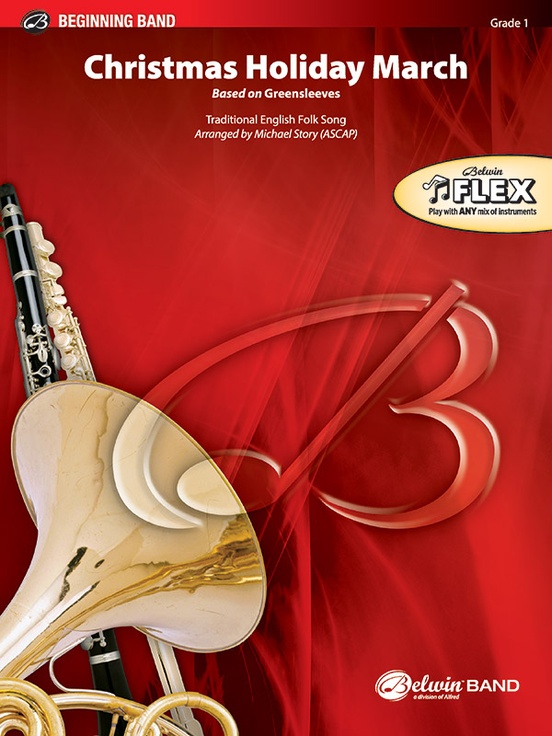 £53.95
£53.95Christmas Holiday March (Greensleeves) (Flexible Ensemble - Score and Parts) - Story, Michael
This version of Christmas Holiday March arranged by Michael Story is designed with maximum flexibility for use by any mix of instruments: wind, strings, and percussion, including like or mixed-ensembles with as few as 4 players. The suggested instrumentation and a customisable Teacher Map will help you plan out how to best assign parts to suit your ensemble's needs. The 4-part instrumentation will support balanced instrumentation of the lower voices. It also comes with supplemental parts for maximum flexibility. With the purchase of this piece, permission is granted to photocopy the parts as needed for your ensemble. A percussion accompaniment track is also available as a free download. String parts have been carefully edited with extra fingerings and appropriate bowings to support students in mixed ensembles playing in less familiar keys. This march setting of the 16th-century traditional English folk song "Greensleeves" is an outstanding fusion piece for beginners. With teaching opportunities for contrasting articulations and phrasing, this is a wonderful selection to march into the holiday season. Duration: 2.15
Estimated dispatch 7-14 working days
-
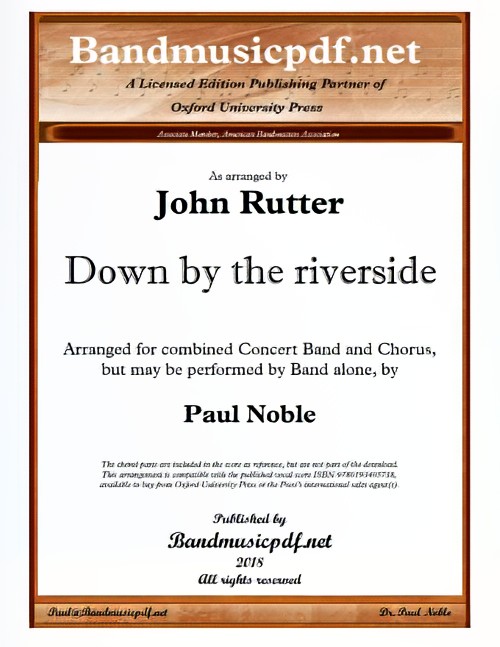 £110.00
£110.00Down by the Riverside (Concert Band with opt. Choir - Score and Parts) - Rutter, John - Noble, Paul
Down by the riverside is a spiritual that was sung by slaves in the South as a work song. It dates back to before the American Civil War. John Rutter's lively arrangement of this barnstorming American folk-song builds up from a quiet opening to a triumphant conclusion. This arrangement is a faithful adaptation of the original orchestration for chorus and orchestra, but it is arranged so that it may be performed by band alone. The style is an authentic toe-tapping early jazz creation that relates to the 'jitterbug' era, and the band arrangement is complete with an optional jazz clarinet solo as well as a rousing chorus by the sax section. The piano part is cued if needed. This is a perfect opportunity to get the entire band 'swinging', and could even entice a 'One mo' time!' finale.
Estimated dispatch 7-14 working days
-
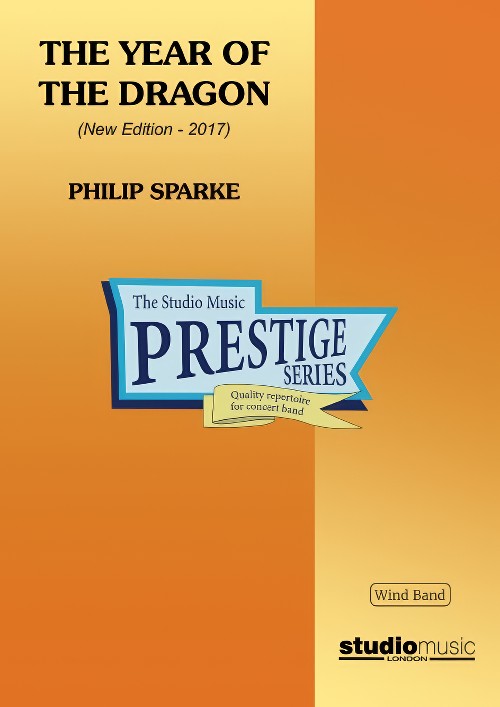 £37.95
£37.95The Year of the Dragon (Prestige Concert Band - Score only) - Sparke, Philip
The 2017 version of The Year of the Dragon was commissioned by the Siena Wind Orchestra and given its world premiere on June 17th 2017 in Bunkyo Civic Hall, Tokyo, conducted by the composer.The original wind band arrangement of The Year of the Dragon was made in 1985, a year after the composer wrote the brass band version. At that time he was still learning the intricacies of writing for wind band (and still is!) and in the 32 years which have elapsed since then, his approach to scoring for the medium has developed and, hopefully, improved.Here are the main differences between the two versions:In the 1980's, the wind band movement was much less international than it is now. British wind bands were still to some extent based on the military band tradition of the time, which tended to use rather smaller instrumentation than the then-dominant American university model. The new version embraces a much more international instrumentation, including low woodwinds and string bass, as well as an expanded percussion section.In the original version there was a touch of naivety in the way the composer wrote for the woodwinds; much of their articulation was transferred too literally from the brass version, resulting in some unidiomatic writing, which he has tried to improve in the new version.In addition to the above, Philip's own compositional style has matured and developed in the intervening 32 years. There are some passages in the original which he simply would not write today - not because they are 'wrong', but because his way of writing has changed. The new version is perhaps how he would have written it today, rather than simply dressing the original version in new clothes.The work is in three movements:Toccata opens with an arresting side drum figure and snatches of themes from various sections of the band, which try to develop until a broad and powerful theme from the middle of the band asserts itself. A central dance-like section soon gives way to the return of this theme, which subsides until faint echoes of the opening material fade to a close.Interlude takes the form of a sad and languid solo for alto saxophone. A chorale for the whole band introduces a brief spell of optimism but the saxophone solo returns to close the movement quietly.Finale is a real tour-de-force for the band with a stream of rapid semi-quavers running throughout the movement. The main theme is heroic and march-like but this is interspersed with lighter, more playful episodes. A distant fanfare to the sound of bells is introduced and this eventually returns to bring the work to a stirring close.
Estimated dispatch 7-14 working days
-
 £199.95
£199.95The Year of the Dragon (Prestige Concert Band - Score and Parts) - Sparke, Philip
The 2017 version of The Year of the Dragon was commissioned by the Siena Wind Orchestra and given its world premiere on June 17th 2017 in Bunkyo Civic Hall, Tokyo, conducted by the composer.The original wind band arrangement of The Year of the Dragon was made in 1985, a year after the composer wrote the brass band version. At that time he was still learning the intricacies of writing for wind band (and still is!) and in the 32 years which have elapsed since then, his approach to scoring for the medium has developed and, hopefully, improved.Here are the main differences between the two versions:In the 1980's, the wind band movement was much less international than it is now. British wind bands were still to some extent based on the military band tradition of the time, which tended to use rather smaller instrumentation than the then-dominant American university model. The new version embraces a much more international instrumentation, including low woodwinds and string bass, as well as an expanded percussion section.In the original version there was a touch of naivety in the way the composer wrote for the woodwinds; much of their articulation was transferred too literally from the brass version, resulting in some unidiomatic writing, which he has tried to improve in the new version.In addition to the above, Philip's own compositional style has matured and developed in the intervening 32 years. There are some passages in the original which he simply would not write today - not because they are 'wrong', but because his way of writing has changed. The new version is perhaps how he would have written it today, rather than simply dressing the original version in new clothes.The work is in three movements:Toccata opens with an arresting side drum figure and snatches of themes from various sections of the band, which try to develop until a broad and powerful theme from the middle of the band asserts itself. A central dance-like section soon gives way to the return of this theme, which subsides until faint echoes of the opening material fade to a close.Interlude takes the form of a sad and languid solo for alto saxophone. A chorale for the whole band introduces a brief spell of optimism but the saxophone solo returns to close the movement quietly.Finale is a real tour-de-force for the band with a stream of rapid semi-quavers running throughout the movement. The main theme is heroic and march-like but this is interspersed with lighter, more playful episodes. A distant fanfare to the sound of bells is introduced and this eventually returns to bring the work to a stirring close.
Estimated dispatch 7-14 working days
-
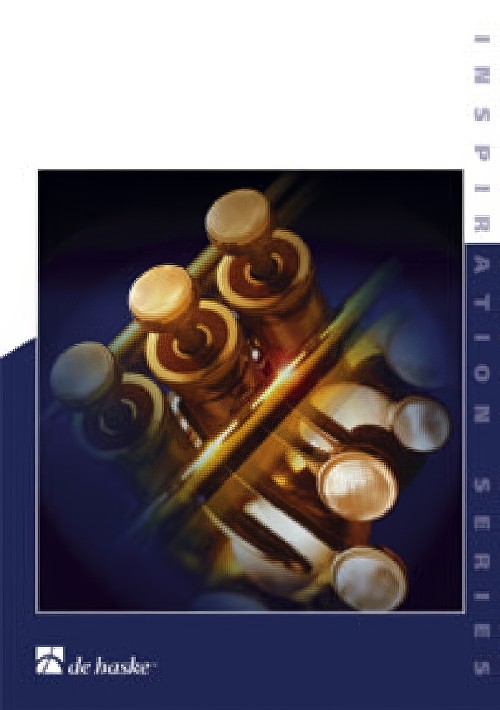 £144.99
£144.99Kraftwerk (Concert Band - Score and Parts) - De Haan, Jacob
The theme of this work is the history of the town of Grafenrheinfeld (Bavaria, Germany) in the twentieth century, a town that is now mainly associated with its nuclear plant. The German word for this is Kraftwerk, which can be divided into the words Kraft (power) and Werk (work). In this composition, it is a metaphor for the 'work' that can be realised through 'power' in a negative way (war) and in a positive way (reconstruction). Musically speaking, power also plays an important role in this work, as opposed to vulnerability, the sense of loss and the insecurity about the lost identity. Based on the text of Lied der Franke 'Kraftwerk' is a powerfully descriptive work that will add energy to any concert.Duration: 8:30
Estimated dispatch 7-14 working days
-
 £44.95
£44.95Two Susato Dances (Concert Band - Score and Parts) - Susato, Tielman - Ellerby, Martin
Around 1540 Tielman Susato, the Belgium trumpet player and composer, established himself in Antwerp as a printer of music. In 1551 he brought out The Third Little Music Book, a collection of instrumental dances. Most of these are arrangements, possible by Susato himself, of popular dance tunes. In keeping with sixteenth-century practice, this book details no specific instrumentation; something to be worked out by the players with whatever available means. Doubtless many of the dances were performed on wind instruments at festive outdoor events. The date of Susato's birth is unknown but estimated to be around 1500. The same applied to his death, which is thought to be somewhere between 1561-64.The third Little Music Book gives several examples of the traditional sixteenth-century genre, the dance pair, a predecessor of the Baroque suite. In such a pair the first dance was often in slow or moderate duple time, the second in quick triple time. This is the case in the pair presented here, which consists of a lively round dance followed by a Hop Up or saltarello.Titles in the Prelude Series are specifically scored for bands with few, if any, bass instruments but will sound well on larger ensembles. The bass line is playable by any combination of bass clarinet, bassoon, baritone saxophone, trombone, euphonium or tuba; in the event that none of these is available, the part for trombone/euphonium (B flat TC) can be played by tenor saxophone. The tuned percussion part is entirely optional and can be played by any available instrument(s). Each piece also includes a preliminary exercise. This is always in the same key as the accompanying piece and consists of a scale and chord progression that can be used for improving ensemble, balance, intonation and instrumental facility by changing tempo, articulation and dynamics.Duration: 2.00
Estimated dispatch 7-14 working days
